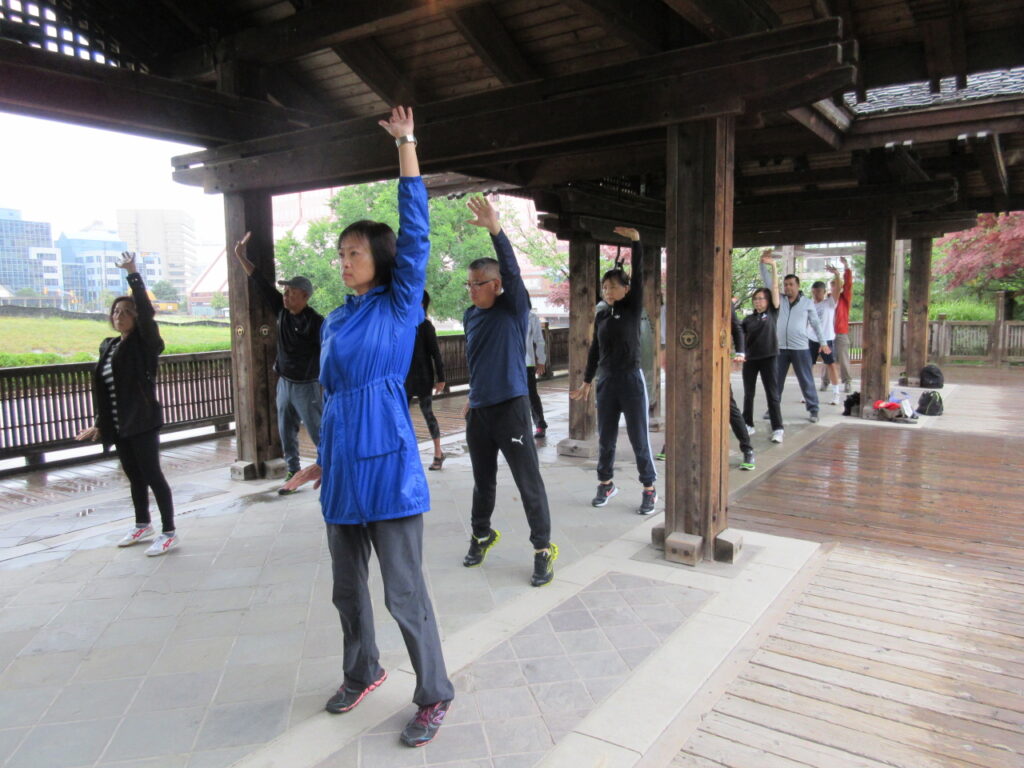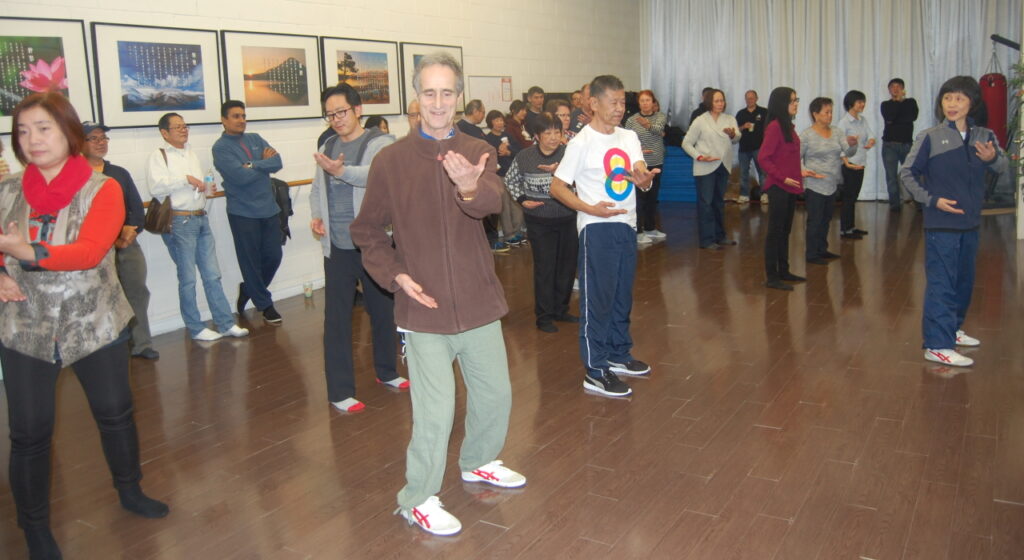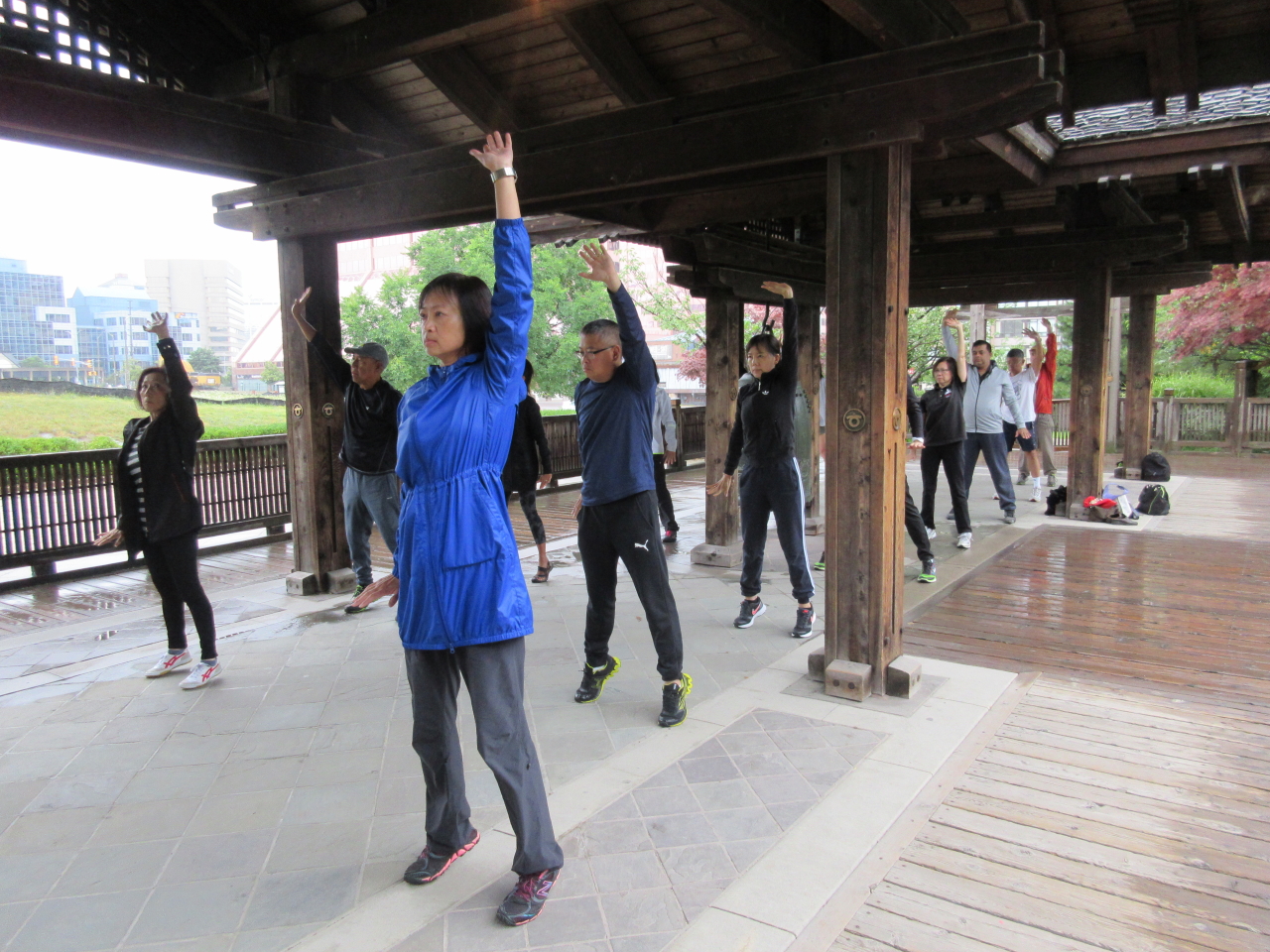Qi Gong is an ancient health practice from China that uses gentle movements to stretch and strengthen the body. The movements are easy to learn and no special equipment or attire is required. This makes qi gong highly accessible regardless of age or physical abilities.
The qi gong style most practiced here at Ji Hong Tai Chi Mississauga is dynamic or active qi gong. To understand the different types of Qi Gong, read the blog What is Qi Gong for a primer on qi gong and the specifics about the various styles of qi gong.
When people start Qi Gong, they start enthusiastically and begin experiencing some of the qi gong benefits during class. The deeper and more meaningful benefits come with long term practice of qi gong.
However, some people never get to that level of experiencing the more profound health benefits because they find the movements too simple or too slow to keep them challenged and continuing to practice. If you’re one of these people, here are four ways to help you keep going so you can personally reap the full health benefits of qi gong.
Work on Good Posture

For Qi Gong to be effective, body posture is important to maximizing the flow of energy or qi throughout the entire body. While most qi gong exercises begin from a standing position, qi gong movements can be adapted to be performed in a sitting position. Either way, working on the proper posture is the key to maximizing the benefits or energy flow.
A good posture means our body is aligned so that the muscles that support our structure are in balance. When our body alignment is balanced, it means that some of our muscles do not need to clench or contract in order to keep our body upright. In fact, good body posture means muscles are relaxed and the least stressed. Achieve a good body posture before moving to a stretched or stressed body position in the movement and finally, return to a fully relaxed body posture. Proper body posture maximizes the flow of qi or energy throughout the body so each full repetition of a movement encourages the flow of qi for best results.
A good starting posture would have the feet shoulder width apart, knees slightly bent, neutral spine with your pelvis slightly tucked under so your spine opens, relaxed arms and shoulders falling to your sides and neck elongated with chin slightly tucked to achieve maximal energy flow. This is typically both the starting and ending point for each movement although there are some moves that have the feet together. Learn how to achieve this neutral body posture to maximize the relaxation of the body as well as the flow of energy throughout your practice.
Slow Down
One of the most common mistakes in practicing qi gong is performing the movements too quickly. Even if you are rushed for time, perform fewer repetitions but perform each move more slowly. There are many good things that happen when you slow the movements down.
Firstly, you’ll need to pay a lot more attention to the movements that you’re making when you move slowly. You won’t be able to just allow muscle memory to take over while you go about mindlessly swinging your arms and legs around. Instead, you’ll be more mindful, moving your body with intention. By focusing your awareness on your breath, you will be able to slow your breathing. Slower breathing will increase the relaxation experienced by both your body and your mind.
By slowing down, your senses also become more alert. You become more aware of everything that your body is both doing as well as sensing. Typically, the first places you’ll experience tingling or heat is at your extremities such as your hands or fingers so don’t be surprised by these new found results as you slow down your movements.
In fact, make the effort to take stock of everything that you experience within your body as you progress through each movement. These sensations are markers of the progress within your body to release the tension found in muscles, tendons and ligaments as well as the increase in circulation to various areas of the body.
Reach Your Limit and Hold

Even though qi gong is a relatively safe exercise, people have hurt themselves while practicing. With qi gong, the movements are designed to contort our body in order to achieve a desired stretch for a certain muscle, tendon or ligament. If we try too hard and push our body beyond its limit, then we may hurt ourselves.
When we slow down, we can reach this limit slowly and know when we’ve reached the limit without injury. When you have reached the limit, hold the pose for one or two seconds. A temporary hold is sufficient to achieve the desired results. Then slowly relax and unwind yourself out of the position to flow back to the starting position with a relaxed body posture.
Each move is repeated several times. With each iteration of the movement, there is an opportunity to extend the movement further. This way of moving is a safer and more effective approach to getting our body energy flowing, stretched and relaxed.
Practice Qi Gong with a Group

Rarely do I practice qi gong by myself. Enjoying qi gong with others who want to practice qi gong makes the one hour of practice go by quickly. There is less stress in trying to remember a move because the group helps you remember.
In a qi gong class, we share a groan and a good laugh from time to time when attempting stretches that really hit the spot. When it comes to the Six Healing Sounds class, when we have 10-20 people chanting the healing sounds, the classroom fills with the glorious healing sounds that reverberate through the classroom as well as our bodies so we can fully experience the energy of these healing sounds. At the end of the class, we may sometimes share our experiences of the sensations that we feel or which movements or exercises felt good for the body.
If you have never tried Qi Gong before, you can drop in to any class any time, you do not need any prior experience to start your Qi Gong practice today.


I have found that one of the most important ways to maximize any meditation technique including Quigong is to get rid of your shoes and socks, There is absolutely no substitute for bare feet. Your feet have 7,000 nerves which are really sensors You can’t play a piano with mittens or gloves on can you?
I am starting to lean Tai Chi Yan style.
I saw one the video and I am like to know if your other training’s video is same as the one i saw.
with explanation how to performs (written explanation).
thank you.
The sample video is exactly how all the other videos will be like. The pace will be slow with verbal instructions. There is no written explanation, only the names of the moves are displayed. Hope this helps.